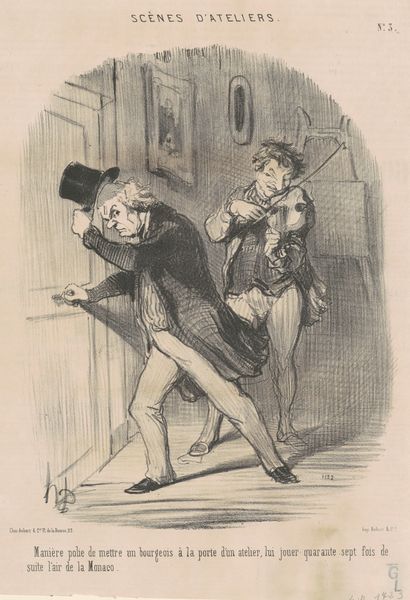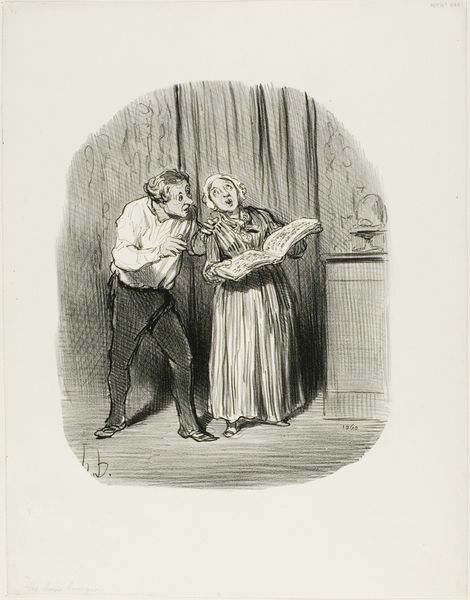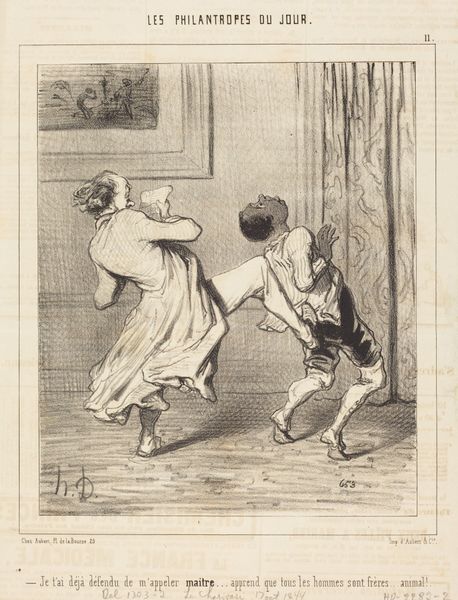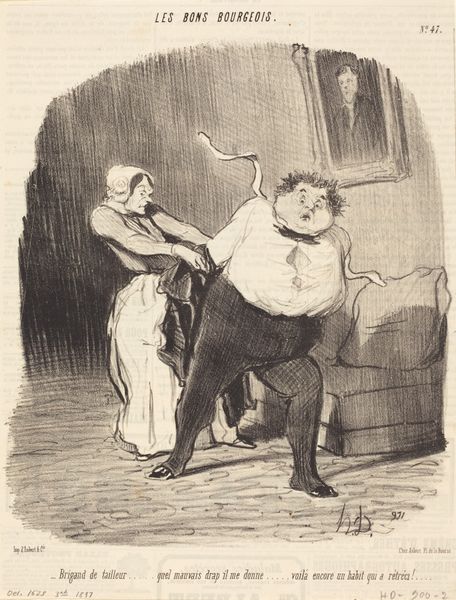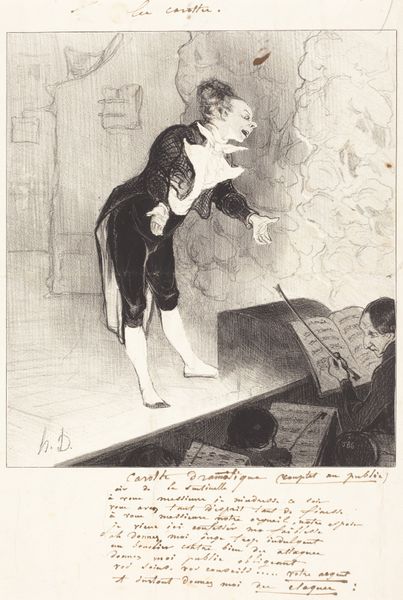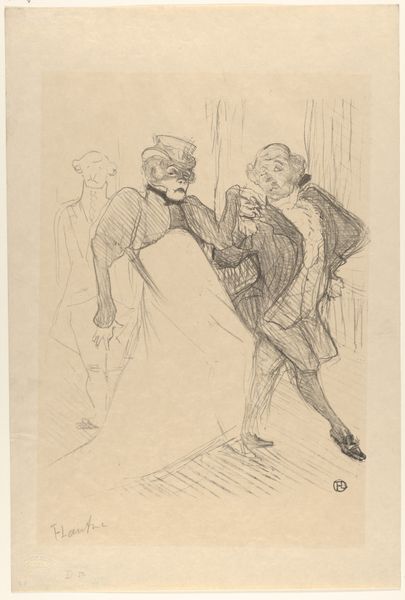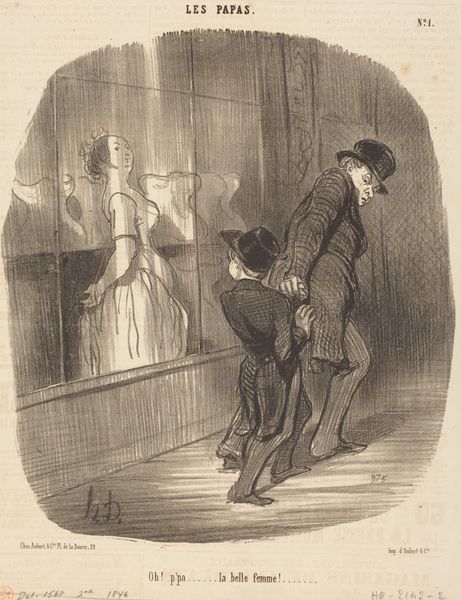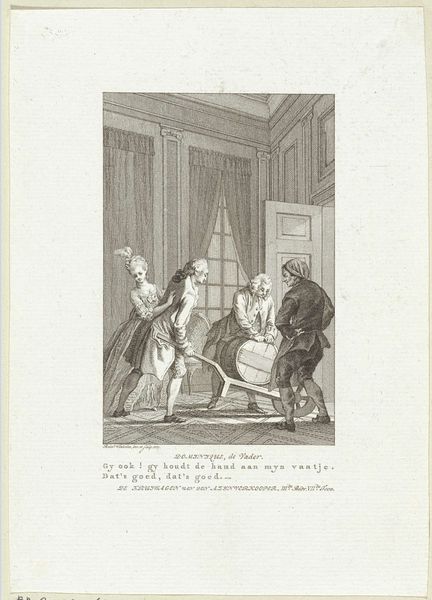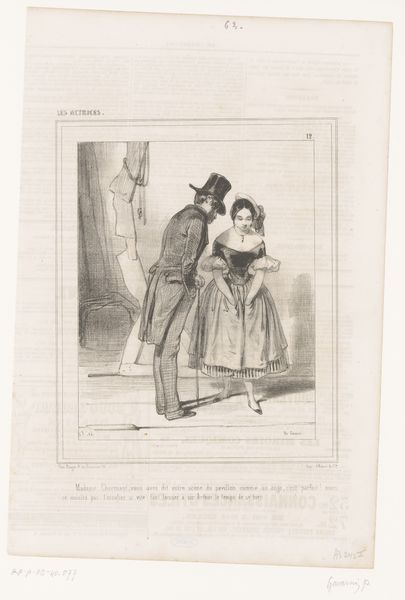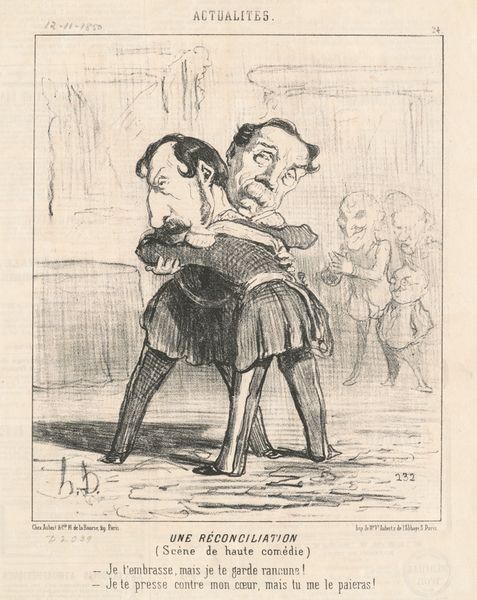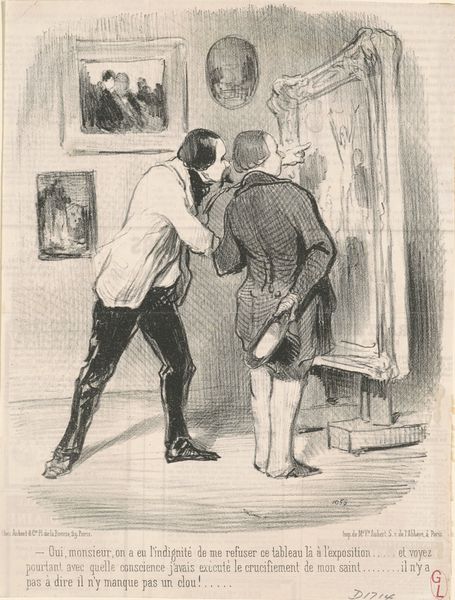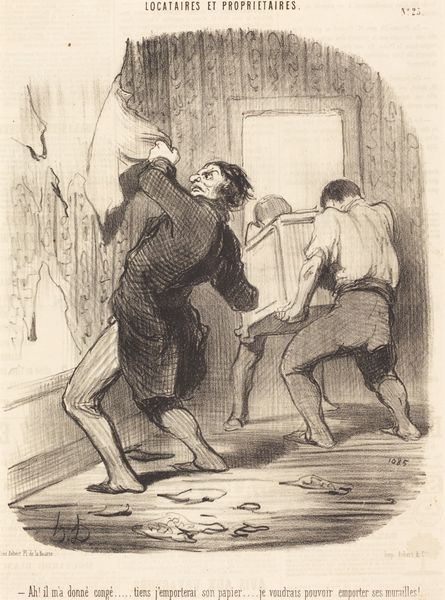
Ah! Mon dieu on a mis le feu a la maison du voisin ... c. 19th century
0:00
0:00
lithograph, print, paper
#
lithograph
# print
#
caricature
#
paper
#
romanticism
#
genre-painting
Copyright: National Gallery of Art: CC0 1.0
Editor: This lithograph, titled "Ah! Mon dieu on a mis le feu a la maison du voisin …", created around the 19th century by Honoré Daumier, feels darkly comedic. I’m struck by how the scene’s sketched using, what looks like, rather rudimentary tools for the time to capture such detailed emotional reactions. What’s your take on the methods used here, in the context of art production at that time? Curator: Precisely. Look at the mass-produced nature of lithographs, intended for widespread consumption in newspapers. Daumier leveraged this accessibility to disseminate social commentary to a burgeoning public readership. Consider the materiality of paper, ink, and the very printing process itself—it becomes a tool to dissect societal anxieties. He uses readily available materials to expose the alarmism prevalent within the middle class. Editor: So, the act of printing and its circulation is almost as important as the image itself? Curator: Absolutely. How the artwork was consumed, circulated, and engaged with within Parisian society highlights the shifting boundaries between art and the everyday. The roughness of the lithographic technique serves not as a limitation but as a direct expression of the immediate and raw realities being depicted, making the social commentary all the more direct. It invites us to see the material conditions as crucial to its message. Does thinking about it this way change your initial perception? Editor: It does. Seeing it as a mass-produced object that could reach a wide audience makes the commentary feel more pointed and intentional. I was initially caught up in the romantic aesthetic, but understanding its method of production sheds new light on it. Curator: Indeed. Recognizing the socio-economic context in which art is produced transforms our interpretation, revealing a network of labor, materials, and social critique interwoven into the very fabric of the artwork. Editor: I appreciate understanding how Daumier used the media he had available to create a powerful critique accessible to so many. It shows art isn’t just about beautiful objects, but a reflection and tool of the society in which it’s made.
Comments
No comments
Be the first to comment and join the conversation on the ultimate creative platform.
